You don’t need a club to improve your swing.
DJ does it. You do it. We all do it.
Whether it’s in front of a mirror, after the lift door closes, or just to get a giggle out of an amused toddler, making golf swings, sans club, is a long-established golf ritual. Although it might seem frivolous, you can actually improve your swing if you pay attention to what you’re doing.
“It’s like shadow boxing. There’s no anticipation of hitting something, so you can focus on making the moves you want and the co-ordination of them,” says Golf Digest Teaching Professional Butch Harmon, who coaches Johnson. “It smoothes out the whole motion.”
Allen Terrell, director of coaching at the Dustin Johnson Golf School and Johnson’s former college coach, says it has value at any level, and he has been watching Dustin do it for years. “It cleans up a lot of bad movement and helps teach a fluid, unrushed swing,” he says.
For Johnson, that’s the key: “I want to swing with effortless power, not power with effort,” he says.
Here Johnson demonstrates how air swings can help your game.
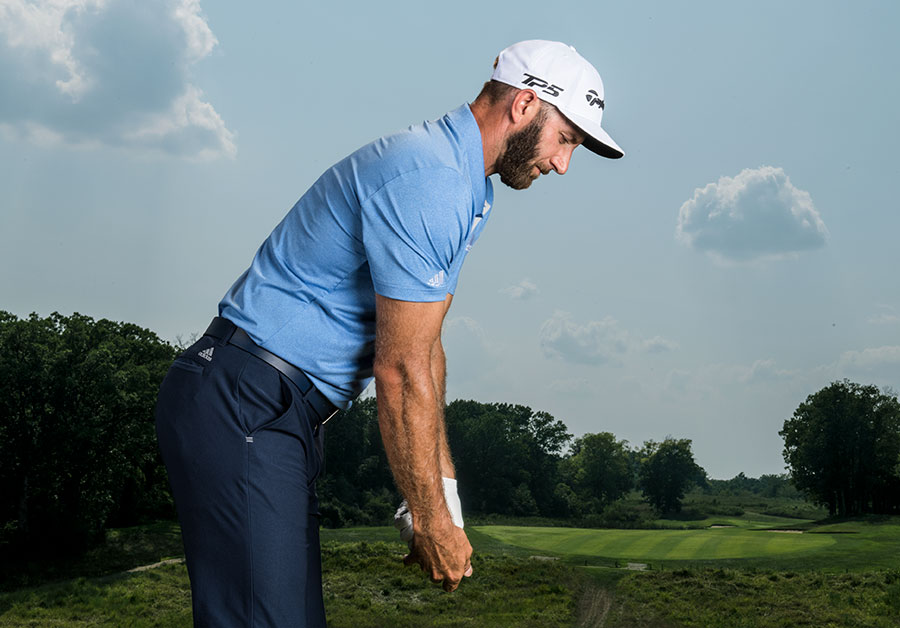
Without a club in your hands, getting into good address posture almost becomes automatic. Johnson says he sometimes stands too far from the ball at address, with his arms having to reach out for it. That can lead to a toe strike and the miss Johnson hates the most, a hook. But without a club or ball to reference, the tendency at address is to let the arms hang naturally like you see here (1). You’ll also feel less rounded in your back, with your hips stacked more under the torso, not jutting too far behind it.
There’s a lot to learn from making air backswings, starting with better tempo. There’s no rush to get the club back to the ball when neither is present, so you tend to take your time swinging to the top. “The smoother your backswing can be, the better you’re going to hit it,” Johnson says.
There’s also a reduction in tension. That helps you make an unrestricted turn, with the torso and hips moving together.It allows you to create and store power in the backswing while still feeling fairly relaxed.
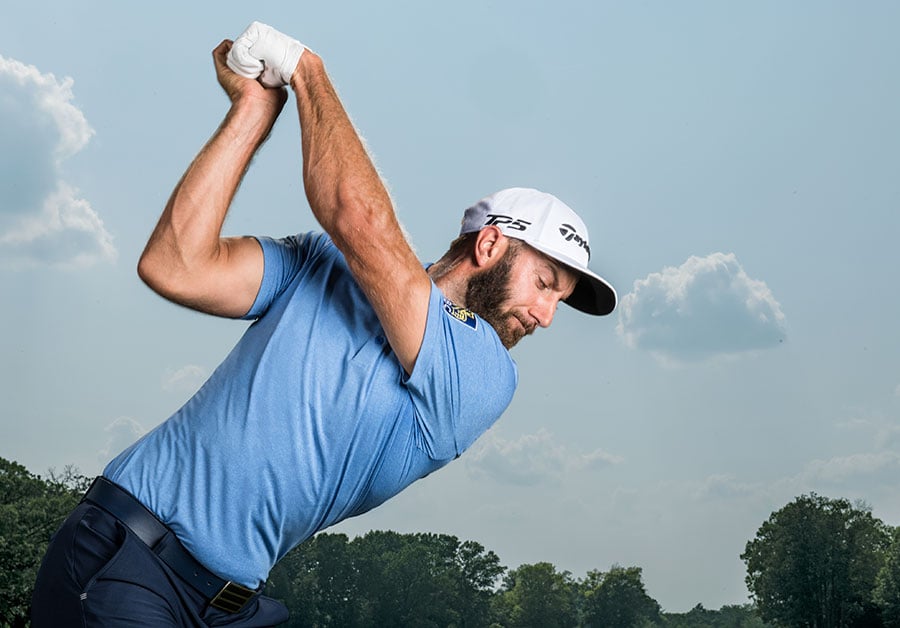
But perhaps the best thing happens at the top – and it’s not copying Johnson’s famously bowed left wrist. It’s keeping the elbows close together (2). That puts you in position to swing down from inside the target line, and it’s much easier to get there without a club. “You can exaggerate things when you make air swings,” Harmon says. “Doing it without a club really isolates the move. You don’t have any distractions.”
Air swings also help to properly sequence the downswing. With no fear of hitting a poor shot, focus turns to making a good weight shift into your front foot and starting the downswing by unwinding the lower body. Even halfway down, you can see how active Johnson’s lower body is while the arms trail (3).
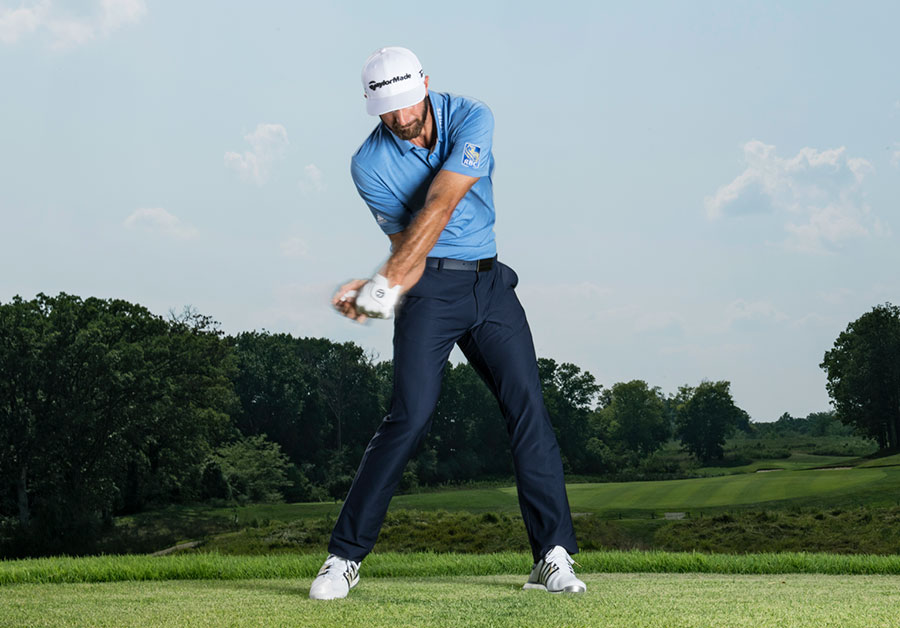
“I like to think of my right hip re-tracing the path it took in the backswing, but in the opposite direction,” he says.
And with air swings, there’s no feeling of urgency to get back to the ball, he says: “I slow things down at the transition because I don’t want to swing hard from the top – I want to swing it hard near the ball.”
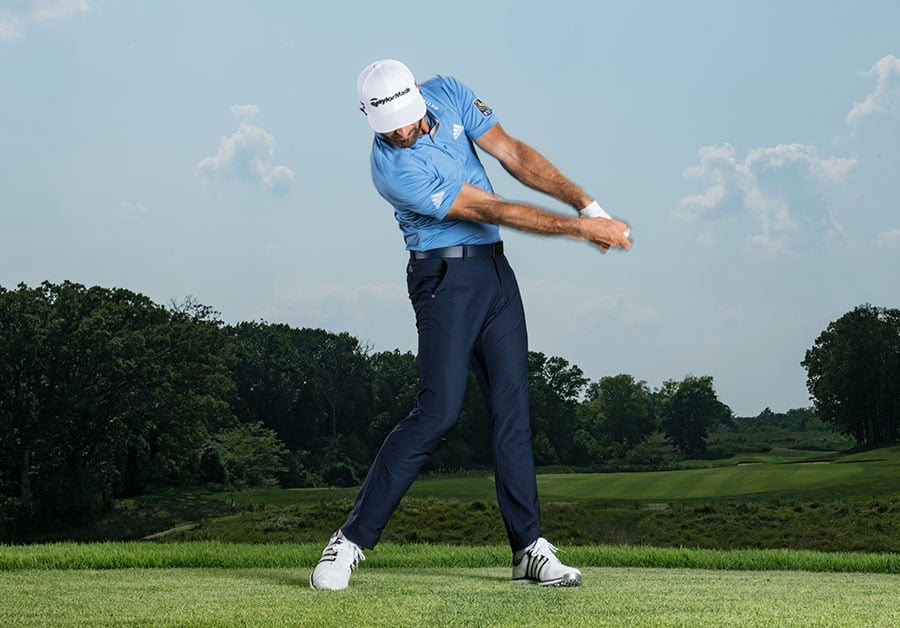
Without a club serving as a counterweight to your body and arms, slowly accelerating down and through feels natural. As does finishing the swing in balance, with the arms extending (4) and the torso completely unwound (5). These things are easier because you’re not fixated on where the ball is headed. Instead, visualise that you pumped a drive, just like Dustin Johnson.
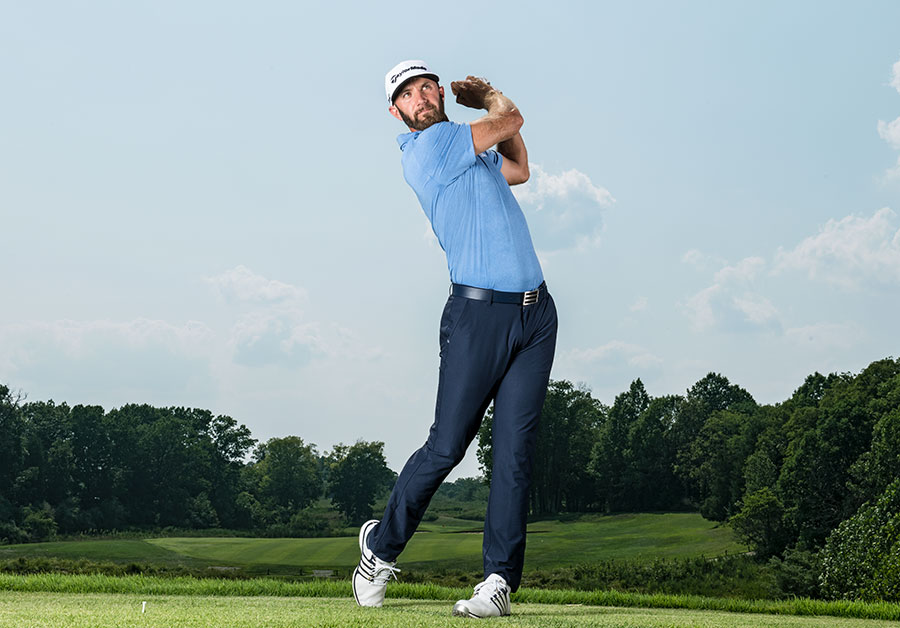
Read on for more instruction from Dustin Johnson and Australian Golf Digest.
